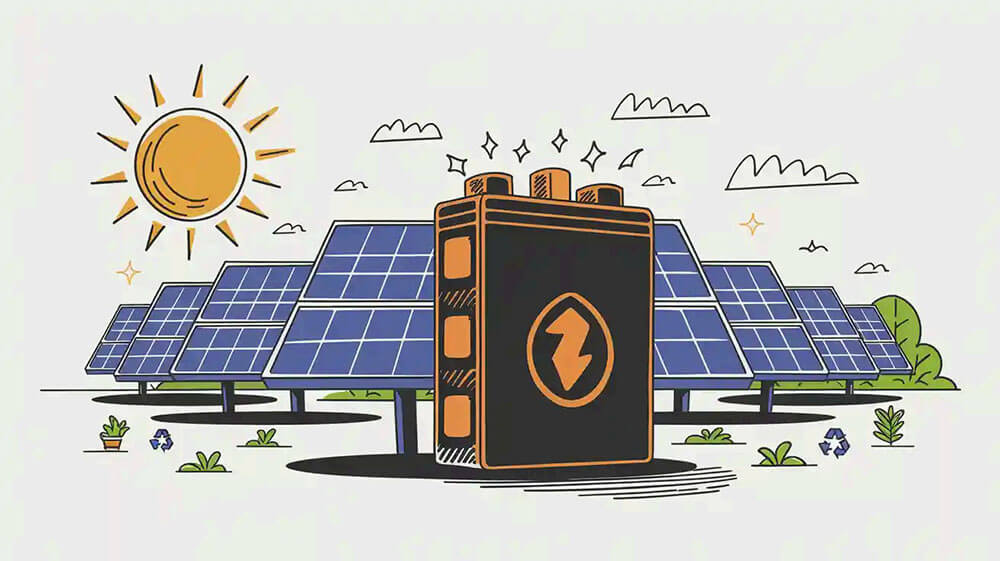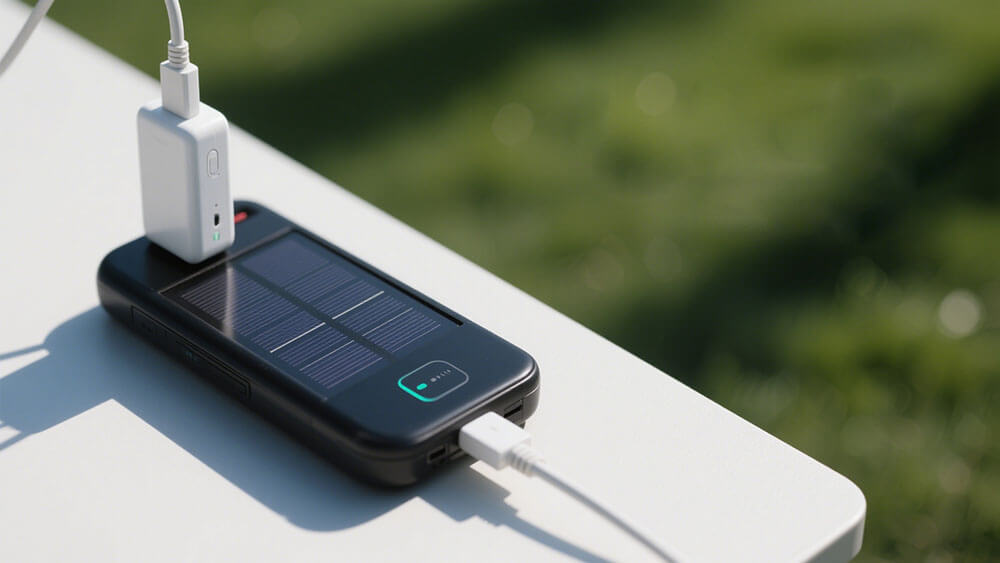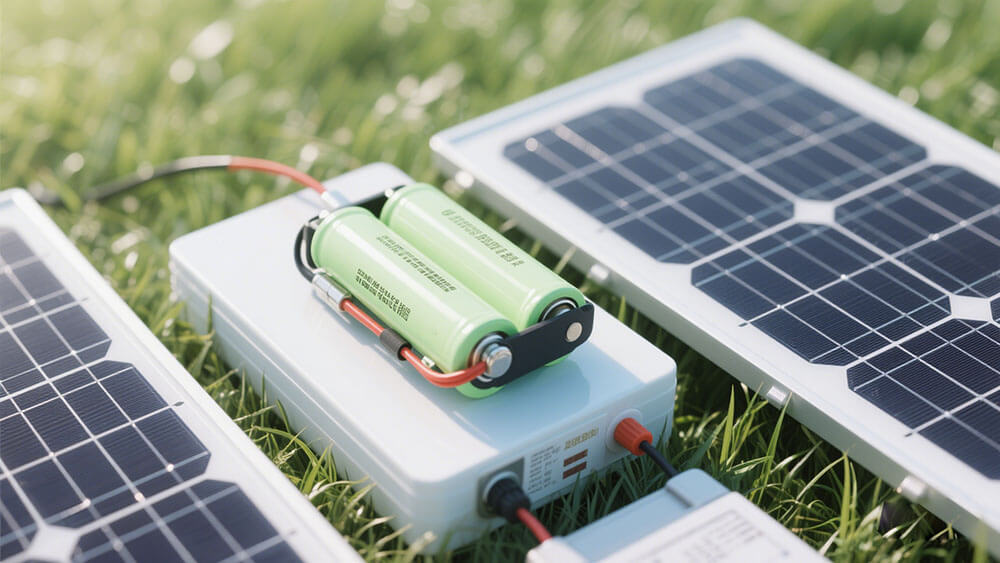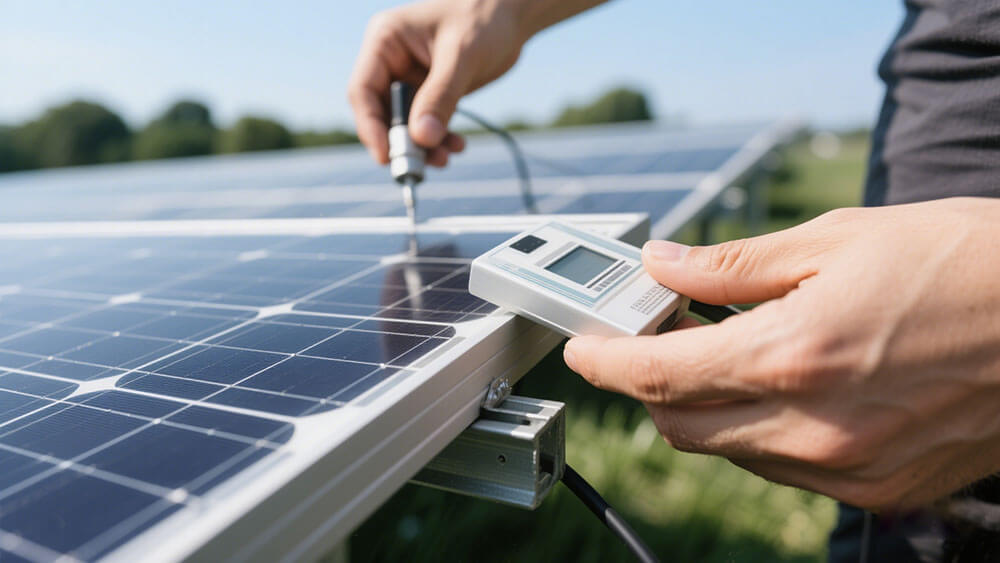Contents

Solar lithium batteries play a crucial role in various industries, including medical, robotics, security systems, infrastructure, and consumer electronics. Ensuring proper maintenance of solar lithium batteries is essential to maximize their efficiency, prolong their lifespan, and minimize operational costs. Failing to perform routine care can result in inefficiencies, such as improper charging or undetected faults, which may hinder performance. Regular inspections, charge monitoring, and temperature control are critical to maintaining sustainability and ensuring a dependable energy supply.
Key Takeaways
Check and clean solar lithium batteries often to stop rust and keep energy flowing well.
Watch battery charge levels and don’t let them drain fully. This helps them last longer and work better.
Keep batteries in cool places to avoid losing power and overheating.

Part 1: Understanding Solar Lithium Batteries
1.1 Characteristics of Solar Lithium Batteries
Solar lithium batteries are engineered to meet the demands of modern industries, including industrial, medical, and infrastructure applications. These batteries operate on the principle of lithium-ion movement between the anode and cathode. During discharge, lithium ions migrate from the anode to the cathode through the electrolyte, generating electrical energy. The charging process reverses this flow, restoring the battery’s charge.
Key components of a solar lithium battery include:
Cathode: Releases lithium ions during discharge and absorbs them during charging.
Anode: Stores lithium ions during discharge and releases them during charging.
Separator: Prevents short circuits while allowing lithium ions to pass through.
Electrolyte: Facilitates the movement of lithium ions between the electrodes.
These batteries are known for their high energy density, long cycle life, and excellent thermal stability. For instance, LiFePO4 Lithium batteries offer a cycle life of 2000–5000 cycles, making them ideal for solar applications. Their ability to maintain a flat discharge voltage ensures consistent performance, even under heavy loads.
1.2 Why Maintenance Is Key to Extending the Lifetime of Lithium-Ion Batteries
Proper solar battery maintenance is essential to extend the lifespan of lithium-ion batteries. Regular inspections and cleaning help identify potential issues, such as corrosion or physical damage, before they escalate. Monitoring charge levels and avoiding deep discharges prevent unnecessary strain on the battery, which can degrade its performance over time.
Temperature management is another critical factor. Lithium-ion batteries perform optimally within a temperature range of -20°C to 60°C. Exposure to extreme temperatures can reduce their capacity and shorten their lifetime. Additionally, using compatible charging equipment ensures proper charging, which is vital for maintaining battery health.
Adopting these essential maintenance practices not only extends the lifespan of your solar lithium battery but also enhances its efficiency and reliability. By following best practices for lithium-ion battery lifetime extension, you can reduce operational costs and contribute to sustainability. For tailored solutions, consider exploring custom battery solutions from Large Power to meet your specific needs.

Part 2: Essential Tips for Solar Battery Maintenance
2.1 Regular Inspections and Cleaning
Regular inspections and cleaning are fundamental to maintaining the efficiency and longevity of your solar lithium battery. Dust, dirt, and corrosion can accumulate on battery terminals and connections, reducing electrical conductivity and overall performance. By scheduling routine maintenance, you can identify and address potential issues before they escalate.
Why it matters: Studies confirm that regular cleaning ensures energy flows efficiently through the battery system. Neglecting this step can lead to reduced capacity and even premature failure.
Best practices:
Use a soft, dry cloth to clean the battery surface and terminals.
Inspect for signs of corrosion or physical damage.
Tighten loose connections to prevent energy loss.
Tip: Incorporate inspections into your operational schedule to avoid disruptions in critical applications like medical devices or security systems.
2.2 Monitoring Charge Levels and Avoiding Deep Discharges
Monitoring charge levels is crucial for maintaining the health of your lithium-ion batteries. Deep discharges, where the battery’s state of charge drops below 20%, can significantly shorten its lifespan. Research shows that keeping discharge levels within the 20%-80% range optimizes performance and prevents unnecessary wear.
Key recommendations:
Avoid frequent deep discharges below 10%, as they can cause irreversible damage.
Use a battery management system (BMS) to monitor depth of discharge (DoD) and prevent over-discharge.
Recharge batteries promptly when they reach 20% capacity.
Note: For industries like infrastructure and industrial operations, maintaining optimal charge levels ensures uninterrupted power supply and reduces downtime.
2.3 Managing Temperature for Optimal Performance
Temperature management plays a pivotal role in the performance and lifetime of solar lithium batteries. Extreme temperatures can degrade battery capacity and lead to thermal issues. Research highlights that maintaining an optimal temperature range of 15–40°C is essential for battery health.
Best practices:
Install batteries in temperature-controlled environments.
Use insulation or cooling systems to protect against extreme heat.
Ensure the temperature difference between batteries does not exceed 5°C.
Tip: For applications in consumer electronics, consider using advanced cooling methods like phase change materials (PCM) to enhance battery performance.
2.4 Proper Storage Practices for Long-Term Use
Proper storage practices are essential for preserving the lifespan of solar lithium batteries during periods of inactivity. Incorrect storage conditions can lead to self-discharge, reduced capacity, and even permanent damage.
Storage guidelines:
Store batteries at a charge level of approximately 40%-50%.
Maintain a storage temperature between 15°C and 25°C.
Avoid storing batteries in fully charged or fully discharged states.
Best Practice | Description |
|---|---|
Charge Level | Store LiFePO4 batteries around 50% charge to prolong lifespan. |
Temperature | Warm batteries before charging in cold conditions. |
Voltage for Storage | Maintain voltage between 3.3 and 3.4 volts per cell for long-term storage. |
Note: For industries like robotics, proper storage ensures batteries remain ready for deployment without compromising performance.
2.5 Using Compatible Charging Equipment
Using the right charging equipment is critical for maintaining the health and efficiency of your solar lithium battery. Incompatible chargers can lead to overcharging, overheating, and reduced lifespan.
What to look for:
Ensure the charger matches the battery’s type, size, and voltage.
Choose chargers with safety features like overcharge protection and thermal regulation.
Opt for reputable brands known for quality and reliability.
Tip: Assess your charging needs carefully. While fast charging may save time, it can stress the battery if not managed properly. For tailored solutions, explore custom battery solutions from Large Power to meet your specific requirements.

Part 3: Common Mistakes to Avoid
3.1 Overcharging or Undercharging Solar Lithium Batteries
Improper charging practices can significantly reduce the lifetime of your solar lithium battery. Overcharging leads to excessive heat generation, which accelerates chemical reactions inside the battery. This can cause thermal runaway, a dangerous condition that may result in explosions or fires. Undercharging, on the other hand, prevents the battery from reaching its full capacity, leading to reduced efficiency and performance.
Key risks of improper charging:
Overcharging can degrade the electrolyte, increasing internal resistance and reducing capacity.
Undercharging can lead to sulfation, where inactive lithium forms on the electrodes, permanently reducing storage capacity.
Incident Description | Damage/Impact | Year |
|---|---|---|
Jimei Dahongmen Shopping Centre explosion | 2 firefighter fatalities | 2021 |
Gimhae, SK overcharging incident | Thermal runaway due to power conversion fault | 2020 |
KEPCO reported Battery ESS fires | Over $20 million in equipment damage | 2018 |
Arizona Public Service explosion | 4 firefighters injured, severe explosion | 2019 |
Tip: Use a battery management system (BMS) to monitor charge levels and prevent overcharging or undercharging. This is especially critical for applications in medical devices and security systems, where reliability is paramount.
3.2 Exposure to Extreme Temperatures
Extreme temperatures can severely impact the health and performance of lithium-ion batteries. High temperatures accelerate chemical reactions, leading to thermal runaway and capacity fade. Low temperatures, on the other hand, cause lithium plating, which can result in short circuits and permanent damage.
Temperature Condition | Effect on Battery | Description |
|---|---|---|
Low Temperatures | Lithium Plating | Impedes lithium-ion movement, forming metallic lithium on the anode. |
High Temperatures | Thermal Runaway | Causes uncontrollable temperature increases, posing safety hazards. |
High Temperatures | Increased Internal Resistance | Degrades the electrolyte, reducing efficiency and capacity over time. |
High Temperatures | Accelerated Self-Discharge | Increases the rate of charge loss when not in use. |
Statistical insights:
A study found that increasing the temperature from 77°F to 113°F resulted in a 20% increase in maximum storage capacity.
At 77°F, battery performance degraded by 3.3% over the first 200 cycles, while at 113°F, degradation doubled to 6.7%.
Note: Install batteries in temperature-controlled environments to mitigate these risks. For industrial applications, consider using cooling systems or insulation to maintain optimal operating conditions.
3.3 Neglecting Routine Maintenance
Skipping routine maintenance can lead to undetected issues, such as corrosion, loose connections, or physical damage. These problems can compromise the efficiency and safety of your solar lithium battery system.
Consequences of neglect:
Corrosion on terminals reduces electrical conductivity, leading to energy loss.
Loose connections can cause overheating and increase the risk of fire.
Physical damage may expose internal components, creating safety hazards.
Tip: Schedule regular inspections to identify and address potential issues early. This is particularly important for applications in infrastructure and robotics, where downtime can be costly.
3.4 Using Substandard or Incompatible Components
Using low-quality or incompatible components can compromise the performance and safety of your solar lithium battery system. Substandard chargers, for example, may lack essential safety features, such as overcharge protection, leading to overheating and reduced lifespan.
Risks of substandard components:
Incompatible chargers can cause voltage mismatches, leading to overcharging or undercharging.
Low-quality materials may degrade quickly, increasing the risk of failure.
Recommendation: Always use components that meet industry standards and are compatible with your battery type. For tailored solutions, explore custom battery solutions from Large Power to ensure optimal performance and safety.
Maintaining your solar lithium battery ensures optimal performance and extends its lifetime. Regular care prevents degradation, reduces replacement costs, and improves system efficiency. Proper management practices, such as monitoring charge levels and controlling temperature, enhance sustainability by minimizing waste. Explore custom battery solutions to meet your unique operational needs and maximize battery health.
Metric | Description |
|---|---|
Battery Lifespan | A longer lifespan reduces replacement costs, leading to significant long-term savings. |
Efficiency Ratings | Higher efficiency (above 90%) means more energy is utilized, improving overall system performance. |
Depth of Discharge (DoD) | A higher DoD allows for greater use of battery capacity without damaging it, enhancing sustainability. |
Maintenance Practices | Regular maintenance can extend battery life and improve efficiency, contributing to cost savings. |
Tip: Investing in proper maintenance practices not only saves costs but also supports sustainability goals. Learn more about Large Power’s sustainability initiatives.
FAQ
1. What are the best tips for maintaining lithium-ion batteries in solar systems?
You should monitor charge levels, avoid deep discharges, and manage temperature. Regular inspections and using compatible chargers also help extend the battery’s lifetime.
2. How does temperature affect the lifetime of lithium-ion batteries?
Extreme temperatures degrade battery capacity and reduce efficiency. Maintaining an optimal range of 15–40°C ensures better performance and a longer lifetime.
3. Why choose Large Power for custom battery solutions?
Large Power offers tailored lithium-ion battery solutions for industries like medical, robotics, and infrastructure.





